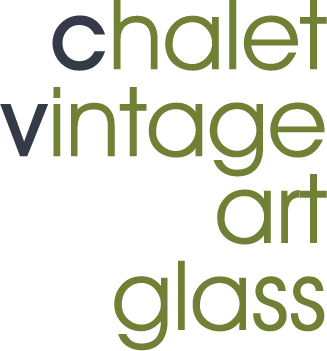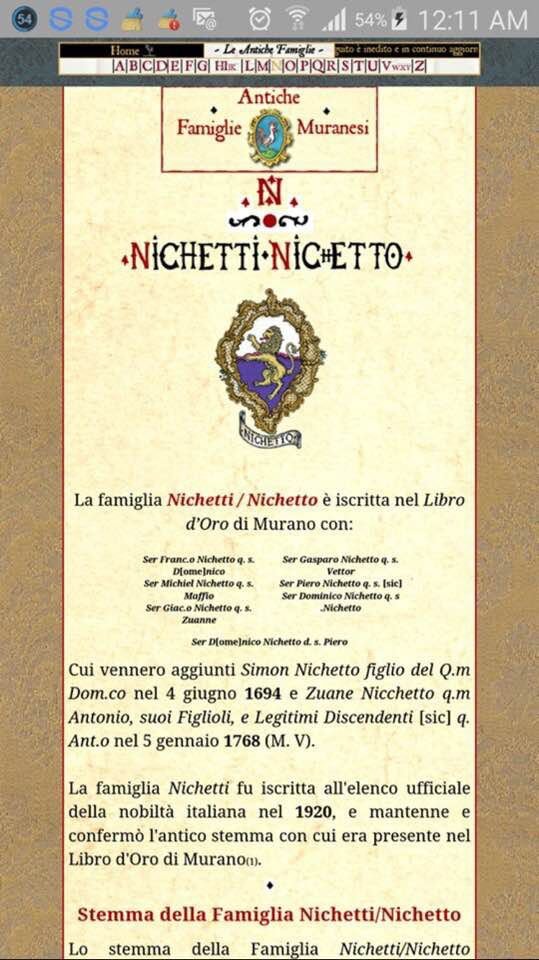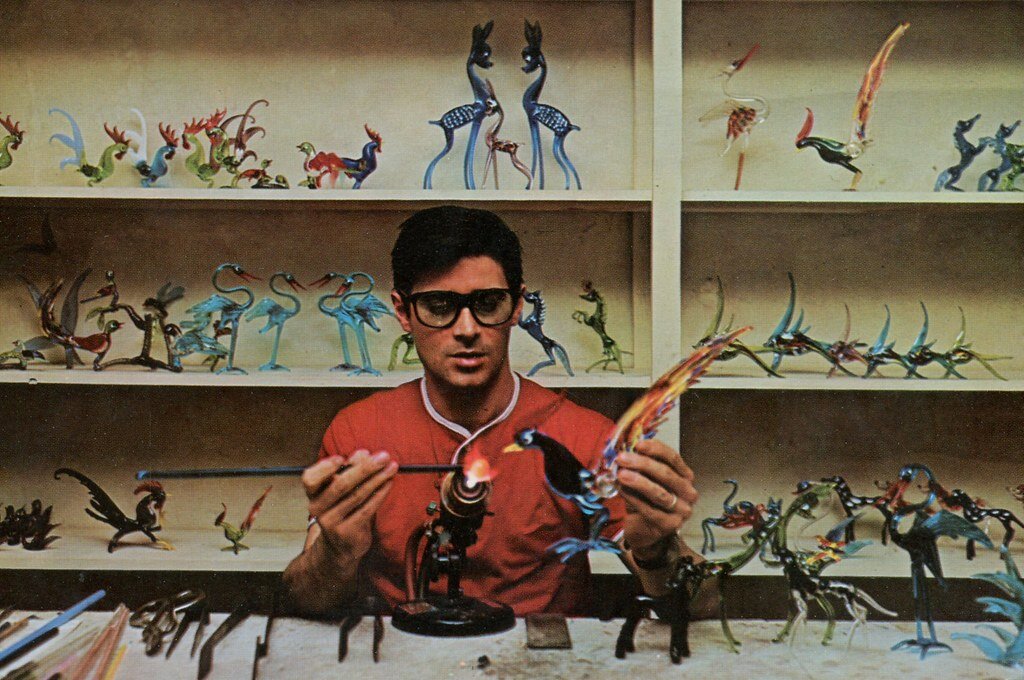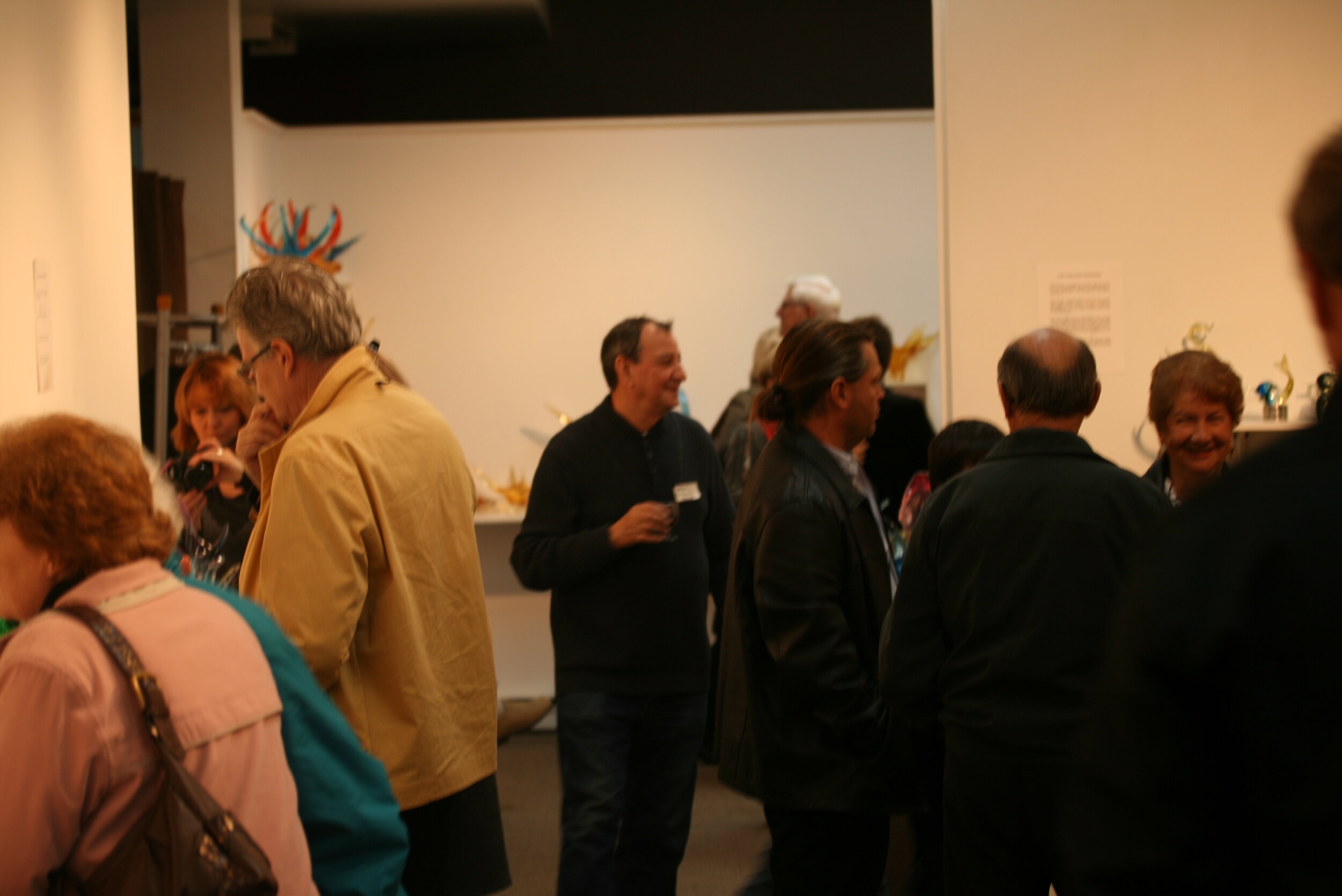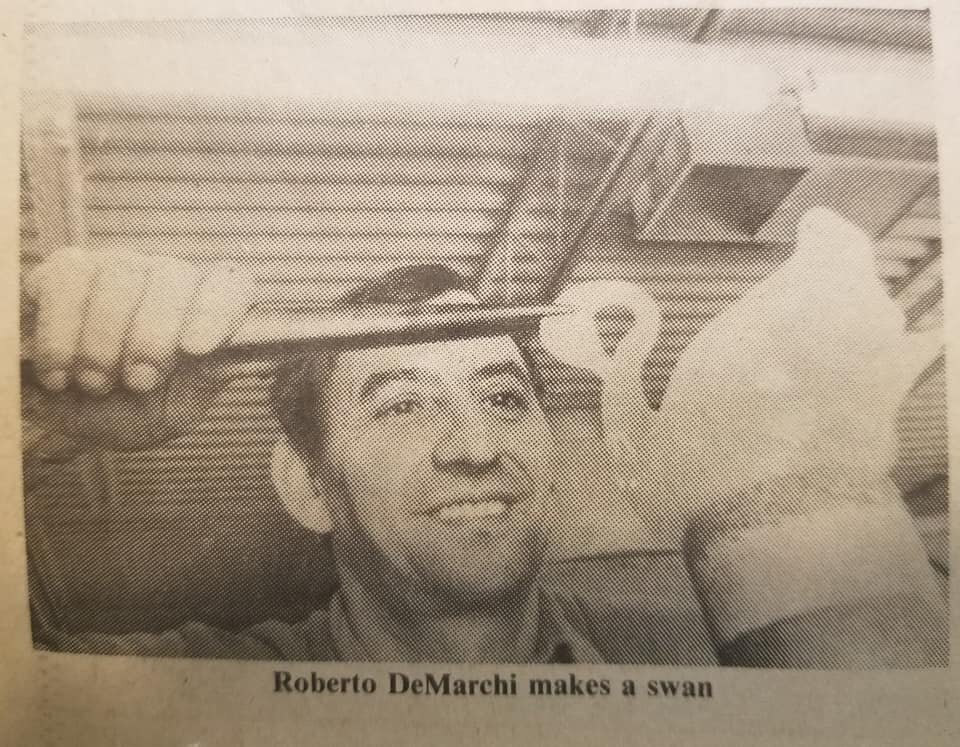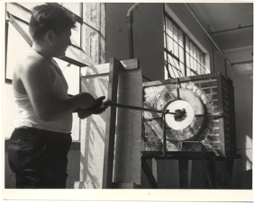The Faces of Chalet
Over the years I have asked the Chalet artists and their family members countless questions and they have always responded with patience and generosity. My gratitude to Danielle and Maestro Giulio Gatto, Maestro Bruno Panizzon, Chalet artists Roberto De Marchi, Gian Paolo Bastianello, Antonio Tedesco and Lino Fuga. Thanks to family members Mario Panizzon and Paolo De Marchi for films and film clips, leads and liaison, input and insight, newspaper articles, photographs … Other family members Nicole Guarnieri, Anna Nichetto and Dani Tedesco gave me invaluable assistance as well. It is also an honour to have these artists and their family members as members of 50 Shades of Chalet. I would like to note that I have sorely missed Gianfranco and Vivian Guarnieri. They were my “Chalet couple” and instrumental in my past endeavors. Lastly, I would also like to recognize Don Smith from the Cornwall Community Museum for his help in providing Chalet employee information and his ongoing sharing of historical photographs and documents.
Poster hanging in the Chalet factory showroom.
Owners and Founders:
Angelo Tedesco
Sergio Pagnin
Luigi Tedesco
Apprentices/Helpers to the Glass blowers (as known) :
Paolo Danesin
William Carriere
Marcel Gravelle
Ronald Derouchie (grinder)
Leo Plamondon (millhand)
Angelo Caparelli (fire maker)
Antonio Carlesso (labourer)
Donald Sabourin
Gastone Maneghini (built ovens and helped mix chemicals)
Ronald Jodoin
Mike McEwen
Victor Sanborn
Danny Dessere
Robert Belanger
Rene Tremblay
Chalet Glass blowers:
Maestro Sergio Pagnin
Maestro Luigi Tedesco
Carlo Fuga
Mirco Dalla Valentina
Maestro Bruno Panizzon
Gianfranco (Franco) Guarnieri
Giovanni (Nane) Bottaro
Maestro Otello Fuga
Maestro Mario Cimarosto
Franco Ianaccio
Imperio D’Este
Luigino (Gino) Fornasieri
Lino Fuga
Aldo Pizzolato
Antonio (Tony) Nichetto
Antonio (Tony) Tedesco
Loredano Favretto
Paolo Danesin
Maestro Angelo (Giorgio) Rossi (achieved Maestro status after Chalet)
Roberto De Marchi
Maestro Giulio Gatto
Gian Paolo Bastianello
Maestro Giovanni Voltolina (achieved Maestro status after Chalet)
Paul Gravelle
Maestro Mario Cimarosto
Chalet Office, Showroom and Shipping: (as known)
Laura Fuga
Mavis Clark
Irma Tedesco
Bruna Guttman
Gina Danieli
Angelo Tedesco (a Venetian master glass blower, master glass cutter and engraver) following many of his countrymen from Murano, Italy settled in Montreal in 195 after living in New York for a number of years. He then sponsored his brother, Luigi Tedesco, and his brother-in-law, Sergio Pagnin and their families to Canada. In 1958, they, and a French-Canadian partner, established a small glassmaking factory “Les Industries de Verre et Miroirs” in Montreal. In 1960, the name was changed to Murano Glass.
In 1960, Cornwall, Ontario faced an oncoming recession. To attract new industry, the Cornwall Industrial Development Limited (CIDL) was created and the Canadian government designated Cornwall “depressed” and thereby eligible for federal tax incentives. Murano Glass was one of the 18 businesses that relocated to Cornwall and production began in September, 1962. To convey a clear statement that this was a Canadian company producing handmade Canadian designs for Canadian tastes by skilled artisans, the company had changed its name to Chalet Artistic Glass
After Chalet’s closure in 1975, Angelo remained in Cornwall and returned to glass cutting and engraving. Five years later, he and a partner, Jean Denis Legault, opened a very small glass house in Saint-Zotique, Quebec. ‘Christallerie Chalet Vie et Art’ which operated from 1979-1981.
Angelo Tedesco, Chalet Artistic Glass, Interviewed by Marcel Cognac for the article “How Canada Makes Venetian Glass.” Canadian Weekly, Sept 8-14, 1962. Pp 10-13. Photograph from the archives of the Cornwall Community Museum.
Chalet Artistic Glass owner Angelo Tedesco, 1965, while being interviewed for the National Film Board documentary “Why Canada.” For viewing of films of interviews, please refer to the’ 50 Shades Resource Library’ accessed through the “Files” header. Films courtesy of Mario Panizzon.
1971 Angelo Tedesco being interviewed in the showroom of the Chalet Artistic Glass factory during the 1971, filming of the National Film board’s documentary “Here is Canada.”
We are so accustomed to thinking of Angelo as the sales dynamo and creator of the company, we have overlooked that he was an artist in his own right. He was a former Venetian glass blower, master glass cutter and engraver. The engraving on the clear crystal plate and bowl shown here are his work. Both were created by his brother Maestro Luigi Tedesco (see below) and then engraved by Angelo. The plate was engraved right at Chalet during a demonstration. It was then displayed in the factory showroom. A one-of-a-kind piece.
Photograph courtesy of Chalet Maestro Giulio Gatto.
Photograph courtesy of Chalet artist Antonio Tedesco.
Chalet owner and Maestro Sergio Pagnin came from a long line of glass blowers on Murano. As well, Sergio was a chemist. However, his destiny was not to remain in Murano but to make art glass history in Cornwall with his brothers-in-law, Angelo and Luigi Tedesco.
Sergio was responsible for creating and safeguarding the colour formulas that brought Chalet glass to life. One of the most important - the cranberry colour recipe that allowed the ‘Canadiana Cranberry’, the ‘End of Day’ and the ‘Opal with Gold Flecking’ lines to be developed. He also loved to work vases. However, what he is best remembered for is designing the decorative face prunt seen on the baskets below.
Basket at rear is from the ‘Opal with Gold Flecking’ line. Left front piece is from the ‘End of Day’ line and the front right basket is a ‘Canadiana Cranberry’ basket.
Maestro Sergio Pagnin, 1965, Cornwall, Ontario at the Chalet Artistic Glass factory. During the filming of the National Film board’s documentary “Why Canada.”
1966. During the filming of “A Place to Stand” which was a film produced by the Ontario Government for viewing at the 1967 World ‘Expo in Montreal.
Maestro Sergio Pagnin, 1971, Cornwall, Ontario at the Chalet Artistic Glass factory. During the filming of the National Film board’s documentary “Here is Canada.” Photograph from page 26 of the 1989 Parks Canada publication ‘Glass Glossary.’
After Chalet’s closure in 1975, he and Luigi Tedesco returned to Murano forming a small company, Pagnin & C., and specializing in Venetian lighting fixtures. Today, grandson Christopher Pagnin continues the family tradition, still in Murano, with Pagnin Glass.
Brochure courtesy of Antonio Tedesco.
Chalet owner and Maestro Luigi Tedesco also came from a long line of glass blowers on Murano. Leaving Italy with his brother-in-law Sergio Pagnin, he joined his brother Angelo Tedesco to create Canada’s most famous glass house of its era.
1962, Cornwall, Ontario at the Chalet Artistic Glass factory. Chalet owner and Maestro Luigi Tedesco. Photographs from the article “How Canada Makes Venetian Glass.” Canadian Weekly, Sept 8-14, 1962. Pp 10-13. Photographs from the archives of the Cornwall Community Museum.
Luigi loved to work baskets, bowls, the long arm stretch centerpieces and was instrumental in establishing the line of cranberry and crystal pieces for Chalet. After Chalet’s closure in 1975, he and Sergio Pagnin both returned to Murano and formed a small company, Pagnin & C., which specialized in Venetian lighting fixtures. See brochure preceding.
1965. Cornwall, Ont., Chalet Artistic Glass factory. Owners Angelo (right) and Luigi Tedesco during the filming of the National Film board’s documentary “Why Canada.”
1965. Cornwall, Ont., Chalet Artistic Glass factory. Maestro Luigi Tedesco during the filming of the National Film board’s documentary “Why Canada.” To view this film, please refer to the 50 Shades “Resource Library” accessed through the ‘Files’ header. Film courtesy of Mario Panizzon.
Luigi Tedesco, 1971, Cornwall, Ontario at the Chalet Artistic Glass factory. During the filming of the National Film board’s documentary “Here is Canada.”
Former Murano Glass artist Carlo Fuga was able to rejoin the new company in Cornwall – moving there permanently from Montreal. Carlo remained with Chalet until its closure in 1975.
Carlo Fuga, Chalet Artistic Glass, September, 1962. Photograph from the article “How Canada makes Venetian Glass.” Canadian Weekly, Sept 8-14, 1962. Pp 10-13. Photograph from the archives of the Cornwall Community Museum.
Former Murano Glass artist Mirco Dalla Valentina was also able to rejoin the new company in Cornwall – moving there permanently from Montreal. Mirco remained with Chalet until 1970.
1965, Cornwall, Ontario. Artist Mirco De Valentina at the Chalet Artistic Glass factory. During the filming of the National Film Board’s documentary “Why Canada.”
To date, only the barest minimum of information about the following Chalet artists. Is available. However, I will continue to research and update and grow their biographies as more details are uncovered.
Chalet artist Aldo Pizzolato worked at Chalet from 1962 until its closure in 1975.
Chalet artist Imperio D’Este worked at Chalet from 1963 until 1972.
Chalet artist Lino Fuga worked at Chalet from 1971 until 1974.
The start dates of these Chalet artists are confirmed. However, the end dates may be inaccurate.
Franco Ianaccio 1963 - 1969/1970
Chalet artist Luigino (Gino) Fornasieri worked at Chalet from 1962 until its closure in 1975.
Chalet artist Giovanni (Gino or Nane) Bottaro worked at Chalet from 1963 – circa 1974. The Cornwall Community Museum recently provided this photograph from a Cornwall Standard-Freeholder article. However, I have no biographical details.
Chalet factory 1966. During the filming of “A Place to Stand.” A film produced by the Ontario Government for the 1967 World ‘Expo in Montreal.
Artist Bruno Panizzon comes from a family of skilled artisans in Murano. He began working with glass at 14 and in the 1950’s apprenticed under Master Mario Fuga at Arte Nuova (Murano) – achieving Maestro status. He came to Canada in 1962 when he was recruited by Earl Myers, owner of S.P. Myers & Company Limited, who established Lorraine Glass Industries in Montreal, Quebec. Bruno’s brother Franco was also a noted Venetian master in Murano but did not join him in Canada. After 6 months at Lorraine, in May of 1963, Bruno was recruited to join Chalet Artistic Glass by Angelo Tedesco – one of the company owners. Angelo was also from Murano. Maestro Panizzon remained at Chalet until its closure in 1975.
1965. Maestro Panizzon heats gather of glass at the Chalet Artistic Glass factory.
Maestro Bruno Panizzon concentrates as he begins work.
The piece begins to take shape during the filming of the National Film board’s documentary, “Why Canada.” To view this film, please refer to the 50 Shades “Resource Library” accessed through the ‘Files’ header. Film clip #35735.
Chalet factory 1966. During the filming of “A Place to Stand.” A film produced by the Ontario Government for the 1967 World ‘Expo in Montreal.
At 14, Gianfranco (Franco) Guarnieri began blowing glass in Italy in 1952 with his uncles. Like many of his colleagues, in 1962, he was recruited by Earl Myers. After 6 months at Lorraine, in May of 1963, Gianfranco was also recruited to join Chalet Artistic Glass by Angelo Tedesco – one of the owners of Chalet Artistic Glass. Gianfranco remained at Chalet until its closure in 1975.
1971. At Chalet, Gianfranco during the filming of the National Film board’s documentary “Here is Canada.” Photograph courtesy of Gianfranco Guarnieri.
2010. Gianfranco and Vivian Guarnieri at the opening reception Saturday, October 30, 2010 of the ‘Art & Artisans of Chalet Glass.’ My ‘Chalet couple.’
Gianfranco shown here in 2012 during a studio shoot for the “Shapes & Colours of Chalet Glass”. See below for more details regarding the fruit and refer to “Chalet Crystal Clear” pages 103 through 105 for details regarding the koala figurine – a verified artist’s production sample.
Although, Chalet did do sommerso apple and pear sets, production #540, this stunning pair was created specifically for his father-in-law – note the massive size.
This set has applied leaf and stem details filled with gold dust. They are much larger than the production version. One of a kind.
Artist Antonio Nichetto began working with glass when he was 12. In Murano, the Nichetto family is one of the of the oldest families. He apprenticed at “Cristaleria Murano” and specialized in stemmed goblets. Antonio moved to Canada and joined Chalet in 1963 as his wife, Lucia Tedesco, wanted to be with her family. He remained until its closure in 1975.
1965, Cornwall, Ontario artist Antonio Nichetto at the Chalet Artistic Glass factory. During the filming of the National Film Board’s documentary “Why Canada.”
1966. During the filming of “A Place to Stand.” A film done by the Ontario Government for viewing at the 1967 World ‘Expo in Montreal.
The Nichetto family crest is on display in the glass museum of Murano. Courtesy of Anna Nichetto.
Chalet artist Antonio Tedesco came from a long line of glass blowers on Murano. He joined his brothers, Angelo and Luigi, at Chalet in late 1963. At Chalet, Antonio was the moleria expert – he ground and polished the bases of the pieces – putting the finishing touches to their shining beauty. He also joined the glass blowing teams whenever an extra artist was needed. Mr. Tedesco remained at Chalet until its closure in 1975. Antonio’s wife Irma also worked in the Chalet factory and showroom – helping with tours and packing inventory. After Chalet’s closure, he then worked for Angelo Rossi at “ Artistic Lighting” in Cornwall until it closed and Rossi returned to Italy. Then, when Angelo Tedesco (Tony’s brother) opened his glasshouse in Saint Zotique, Quebec, he joined him and other former Chalet artists to blow glass there for the company’s brief time in operation. When Angelo Rossi returned to Cornwall in 1981 to open Rossi Artistic Glass, Antonio returned to work there from its opening in 1982 until its closure in 1994 when Rossi again returned to Italy. He also worked sporadically in Niagara Falls, Ontario when Rossi set up Artistic Glass in 1996.
1965. Antonio Tedesco working the grinder at the Chalet factory. During the filming of the National Film Board’s documentary “Why Canada.”
Chalet artist Antonio Tedesco in the Chalet Artistic Glass showroom with his niece Fiorella Pagnin and his nephew Francesco Pagnin. Date unknown. Photograph courtesy of Antonio Tedesco.
Antonio Tedesco ‘talking Chalet’ with the Zhao family at the opening reception, Saturday, October 30, 2010 of the ‘Art & Artisans of Chalet Glass’ exhibit Cornwall, Ontario. We sadly note his passing in 2022.
In 1963, Maestro Otello Fuga immigrated from Murano to work for Lorraine Glass Industries in Montreal. However, he was not happy there and was personally recruited to Chalet by Angelo Tedesco. He was only 22 at the time and spoke no English. Under his father’s wing, he had been working with glass from the age of 10 on Murano. Fuga worked at Chalet for approximately two years before he left to found and operate Gala Glass in late June of 1965. Gala Glass was yet another Cornwall glass company but not an oven/furnace glass factory. Fuga’s figurines were made with rods and torches. To date, we have no historical photographs of Maestro Fuga working on the factory floor at Chalet. Therefore, a photograph of him working at Gala Glass is provided instead.
Maestro Otello Fuga at Gala Glass, Cornwall. 1965. Photograph courtesy of Mario Panizzon.
Maestro Angelo Rossi also comes from a long tradition of glass blowing in Murano, Italy. He began his career at age 10 in Murano, Italy, under the tutelage of his father. He worked at Lorraine Glass Industries, Montreal, and then moved to Chalet Artistic Glass, Cornwall, in the late 1960’s and worked there until its closure in 1975. After Chalet’s closure, he and a partner bought Chalet’s equipment but not the name and established Artistic Lighting in Cornwall. Rossi left that company and returned to Italy but resettled in Cornwall in 1981and opened Rossi Artistic Glass. It closed in 1994 when Rossi once again left Cornwall for Italy. Returning to Canada, he set up Artistic Glass in 1996 in Niagara Falls, Ontario. In 2001, he left the company and toured as a consultant/visiting artist - most notably at Fenton Art Glass in the United States from 2003-2005. In 2005, he settled once more in Niagara Falls and opened Rossi Glass. Rossi employed many artists and apprentices that had formerly worked with him at Chalet Artistic Glass. Over the years, Rossi Glass morphed into Rossi Glass Niagara, then Angelo Rossi Glass and lastly operated as Angelo Rossi Galleria. He retired in 2022 and closed his glass making studio.
Chalet Artistic Glass, Cornwall, 1973. Angelo Rossi, left foreground, Riekes Crisa executive Roger Burns and Chalet owner, founder and chemist Maestro Sergio Pagnin at right. During photo shoot and coverage regarding Chalet’s acquiring Riekes Crisa as their American distributor. Photograph courtesy of the Cornwall Community Museum.
Roberto De Marchi began working with glass in 1958 in Murano at Laguna Glass which was the glass house of the great Venetian Maestro Archimede Seguso. It still operates today. He worked and knew Chalet Maestro Sergio Pagnin in Murano before coming to Canada. Like many of his colleagues, he came to this country when he was recruited by Earl Myers, owner of S.P. Myers & Company Limited, to work at the by then well-established Lorraine Glass Industries in Montreal, Quebec. After 6 months at Lorraine, in 1970, Roberto was recruited to join Chalet Artistic Glass by Angelo Tedesco (Chalet owner) and Angelo Rossi (a Chalet artist). Roberto remained at Chalet until its closure in 1975. He then worked for Angelo Rossi at “Rossi Artistic Lighting” in Cornwall until it closed and Rossi returned to Italy. From 1977 to 1978, he blew glass in Toronto at Crystal Craft Industries (Morris Jaslow was Angelo’s Rossi in Cornwall after Chalet’s closure) and then again for Angelo Tedesco at Christallerie Chalet Vie et Art in St-Zotique, Quebec from 1979 to 1981. When Angelo Rossi returned to Cornwall in 1981 to open Rossi Artistic Glass, Mr. De Marchi returned to work with him. He worked there from its opening until its closure in 1994 when Rossi again returned to Italy. He rejoined the Rossi team when Rossi once again returned to Canada (Niagara Falls, Ontario) in 1996. However, the distance from his family was difficult and his tenure was brief. Returning to Eastern Ontario, he blew glass in Merrickville at the Kevin Gray Glassblowing Studio for approximately 2 years where he once again worked with Giovanni Voltalina. Roberto then joined Angelo Tiozzo (who bought the company from Maestro Otello Fuga) at Cornwall’s Gala Glass and worked with him until Mr. Tiozzo moved to Toronto in 2008. I have included pictures from the 2010 opening reception of “The Art & Artisans of Chalet Glass” exhibit in Cornwall, Ontario as to date, there are no historical pictures of Roberto at Chalet Artistic Glass. Therefore, see last photo from his glass blowing at Rossi Artistic Glass.
Chalet artist Roberto De Marchi (right) at the Saturday, October 30, 2010 opening reception of “The Art & Artisans of Chalet Glass” exhibit in Cornwall, Ontario. To his left, Chalet artist Giovanni Voltolina and exhibit coordinator Deborah Patterson.
Chalet artist Roberto De Marchi (centre with name tag) at the Saturday, October 30, 2010 reception to open “The Art & Artisans of Chalet Glass” Cornwall exhibit. A few days later, he would utter his ‘famous’ words, “Not Chalet.” Roberto was instrumental is kick starting our realization that while the artists made all the pieces at the exhibit, they were not all made at Chalet. Thusly, beginning our understanding of the different glass houses of that period and the identification of pieces in this framework.
Cranberry pitcher made by Chalet artist Roberto De Marchi. Photograph courtesy of Paolo De Marchi.
Rossi Artistic Glass. February 1981. From the Cornwall Standard Freeholder article of February 8, 1981, “They are Masters at their craft.” Photograph from the archives of the Cornwall Community Museum.
Paolo Danesin joined Chalet in 1968 and remained there until its closure in 1975. He was married to one of Angelo and Luigi’s sisters. I have no autobiographical details for a biography at this date.
Circa 1972.Paolo Danesin standing in front of one of the ovens at Chalet Artistic Glass. Photograph courtesy of Roberto De Marchi.
Maestro Giulio Gatto began working glass in Murano, with his uncle, as a 13-year-old teen-ager. Little by little, he worked his way up the ranks of the glass blowing teams. And – he was attending drawing classes in Murano, expressly dedicated to glass workers. Fully qualified as a glass blower, he left Italy in February of 1964 – recruited by Elio and Daniel Pavanello of the Montreal glass house Venice Art Glass (name change to EDAG in late 1964). In January of 1965, he joined Lorraine Glass Industries. Then, in 1969, he moved to Cornwall and worked at Mosaic Artistic Glass until its closure in 1970. At that point, he joined his boyhood friends from Murano at Chalet Artistic Glass and remained there until its closure in 1975. He then worked with Artistic Lighting in Cornwall for a very brief period before taking a job with a construction firm. When Angelo Tedesco opened his glasshouse in Saint Zotique, Quebec in 1979, Giulio joined the company for its brief duration. He continued work as a master artist when Rossi returned to Cornwall to establish Rossi Glass in 1981. Maestro Gatto worked there until the company closed in 1994. He then returned to Montreal.
Chalet, 1972. Maestro Gatto finishes a basket from the “End of Day” line.
Maestro Gatto works on a bottle while Maestro Sergio Pagnin watches. During the filming of the National Film board’s 1971 documentary “Here is Canada.” Photograph from page 25 of the 1989 Parks Canada publication ‘Glass Glossary.’
Maestro Gatto, 2010. Studio shoot (Cornwall, Ontario) for “The Shapes & Colours of Chalet Art Glass.” The rare vase shown was a piece made by him at Chalet and is 13 ½ inches tall with base diameter of 8” and weighs 6 ½ lbs. Ashtray to the left of vase was created by Maestro Gatto at Lorraine Glass Industries.
August 2020. Danielle Gatto and Maestro Gatto with a few of the pieces he made at Venice Art Glass, Lorraine Glass Industries, Mosaic Artistic Glass, Chalet Artistic Glass, Christallerie Chalet Vie et Art and Rossi Glass. Note that the vase shown above (far left back) is still in his possession over 45 years later. Photograph courtesy of Danielle Gatto.
Gian Paolo Bastianello began working with glass in Murano at the age of 13. He came to Canada in 1969 when, like his colleague Roberto De Marchi, he was recruited by Earl Myers, owner of S.P. Myers & Company Limited, to work at Lorraine Glass Industries. After 6 months at Lorraine, in 1970, Mr. Bastianello joined Chalet Artistic Glass in Cornwall. He worked there until 1972 and then moved to the Niagara region for a few years. However, he returned to Eastern Ontario and continued to blow glass as well as teaching workshops at St. Elmo’s Glass Blowing and at the Priest’s Mill Glassblowing and helping establish and grow studios such as The Glass Blowing Place in Alexandria, Ontario in 2005. At this time, there are no historical pictures of Gian Paolo at Chalet Artistic Glass.
November 29, 2014. Gian Paolo Bastianello (seated) works with Eric Covington at the Priest’s Mill Glassblowing studio in Alexandria, Ontario.
A work created by Gian Paolo Bastianello at the Priest’s Mill Glassblowing. Photographs courtesy of Gian Paolo Bastianello.
At 13, Giovanni Voltalina began working with glass in Murano. He was brought from Murano to Canada in 1972 to join Chalet Artistic Glass by Angelo Tedesco whom he knew from Murano. Mr Voltalina remained at Chalet until its closure in 1975. He then worked for Angelo Rossi at “Artistic Lighting” in Cornwall until it closed and Rossi returned to Italy in late 1978. In 1979, Giovanni joined Angelo Tedesco and several former Chalet artists to blow glass in Tedesco’s new Saint Zotique, Quebec glasshouse. After that operation ceased, he reunited with Morris Jaslow at Crystal Craft Industries in Toronto from 1980-1981. It also was a very short-lived company. Therefore, when Angelo Rossi returned to Cornwall in 1982 to open Rossi Artistic Glass, Mr. Voltalina returned to work there from its opening in 1982 until its closure in 1994 when Rossi again returned to Italy. Giovanni then blew glass in Merrickville at the Kevin Robert Gray Glassblowing Studio for approximately 20 years. During this period, he attained Maestro status. taining Maestro status.
A poignant quote by Giovanni Voltolina (2010) to Bruno Andrus while being interviewed for Mr. Andrus’ PhD thesis on glass-blowing; “We did not know we were artists but we were artists.” Throughout his career, Maestro Voltolina exhibited a special talent for creating wonderful animal figurines.
To date, there are no historical pictures of Giovanni at Chalet Artistic Glass Therefore, I have included pictures from the 2010 opening reception of “The Art & Artisans of Chalet Glass” exhibit in Cornwall, Ontario and at Rossi Artistic Glass.
Chalet artist Giovanni Voltolina (in profile) at the 2010 opening reception, Saturday, October 30, of “The Art & Artisans of Chalet Glass” exhibit in Cornwall, Ontario.
A piece made by Maestro Giovanni Voltolina. From the collection of David Mackie, member of 50 Shades of Chalet.
Giovanni at Rossi Artistic Glass, February 1981. From the Cornwall Standard Freeholder article of February 8, 1981, “They are Masters at their craft.” Photograph from the archives of the Cornwall Community Museum.
Glass blower Paul Gravelle began work at Chalet as a helper to the artists. He worked his way up until he achieved glass blower standing. After Chalet’s closure, Paul then worked for Angelo Rossi as a glass blower at “Rossi Artistic Lighting” in Cornwall until it closed and Rossi returned to Italy. From 1979 until 1981, he blew glass again for Angelo Tedesco at Christallerie Chalet Vie et Art in St-Zotique, Quebec. When Angelo Rossi returned to Cornwall in 1982 to open Rossi Artistic Glass, he worked there from its opening in 1982 until its closure in 1994. To date, there are no historical photographs of Mr. Gravelle working on the factory floor at Chalet. Therefore, a photograph with him working with Angelo Rossi at Rossi Artistic Glass is provided instead.
Photograph from the Cornwall Standard Freeholder. December 13, 1981. Photograph from the archives of the Cornwall Community Museum.
There are photos of artists and helpers that can not be identified. Artists from Italy, Spain, France and Mexico who stayed at Chalet for only a short time. Local helpers from the Akwesasne Mohawk Reserve. Typically, they could either not stand the heat of the factory or the cold of the Canadian winter.
1962, Cornwall, Ontario at the Chalet Artistic Glass factory. Photograph from the article “How Canada Makes Venetian Glass.” Canadian Weekly, Sept 8-14, 1962. Pp 10-13. Unknown artists. Photograph from the archives of the Cornwall Community Museum.
1971. Unknown Chalet artist. During the filming of the National Film board’s documentary “Here is Canada.”
Unknown artist. Chalet factory 1966. During the filming of “A Place to Stand.” A film produced by the Ontario Government for the 1967 World ‘Expo in Montreal.
1965. Still taken from the National Film board’s documentary, “Why Canada.”
Please leave a comment, make a suggestion or ask a question about this article. It will be answered promptly as feedback always welcome!
